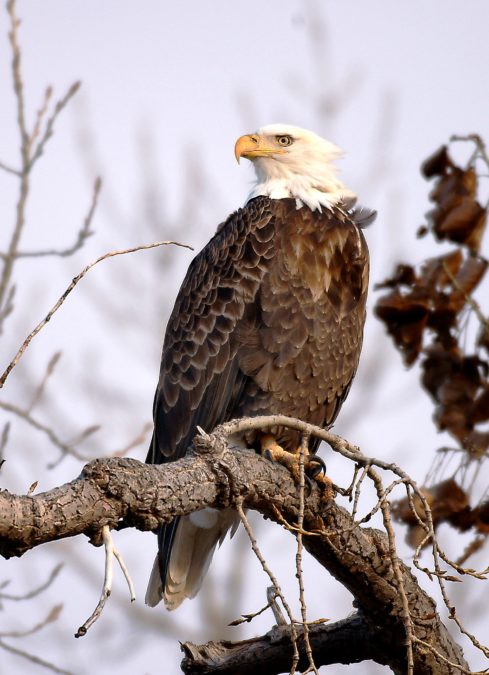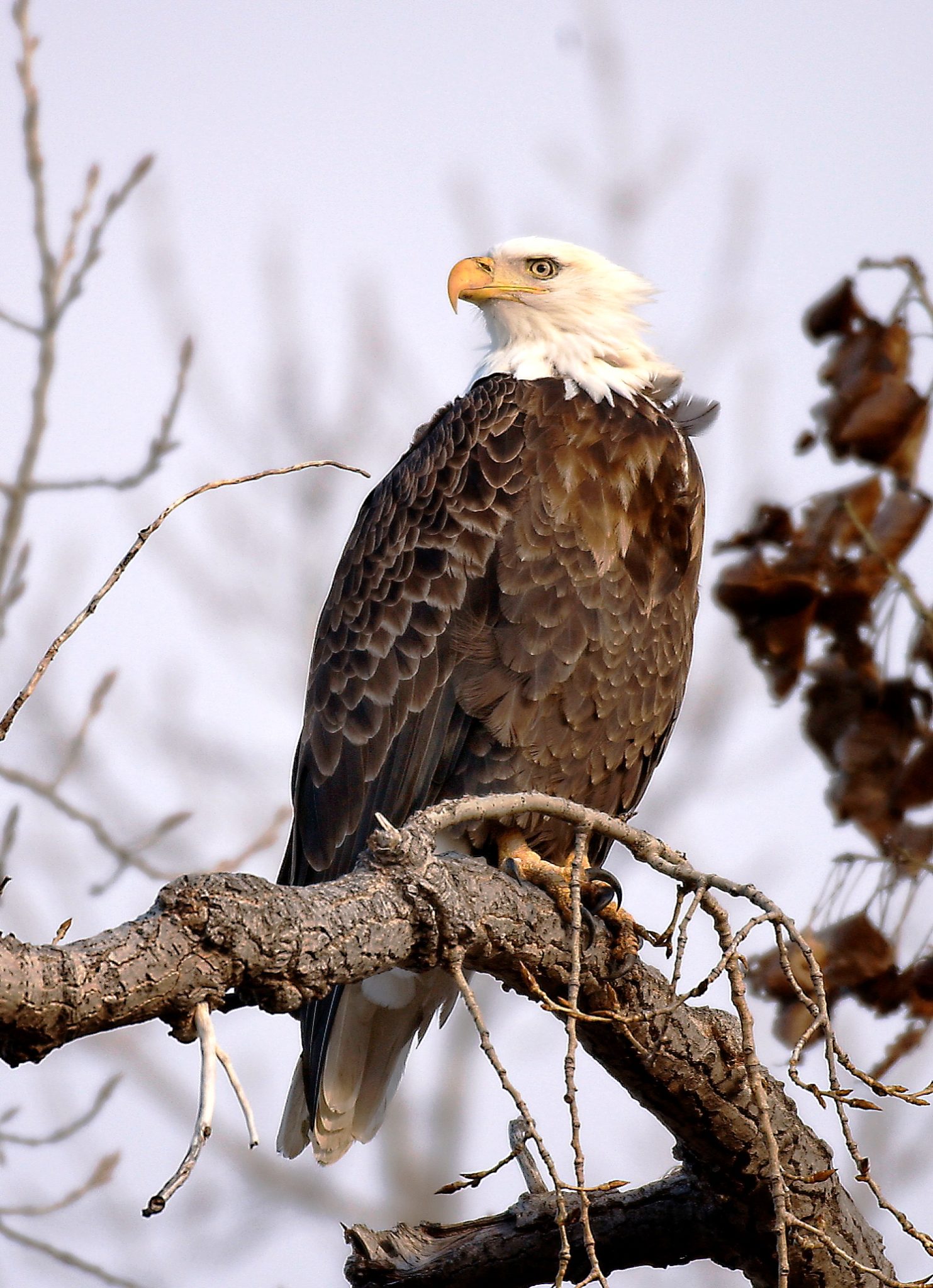Last week driving near the Fargodome in north Fargo, I was scanning the road ahead and I spotted a bald eagle. Then another. Then another.
One of my kids noticed it, but the others in the car didn’t seem too interested. We didn’t stop. I didn’t turn down the radio, point, and begin a narrative on the history of bald eagles nationally and locally.
Fact is, I could have driven them to at least two bald eagles nests in less than 15 minutes.
It hasn’t always been that way.
Twenty-five 25 years ago on a side trip across Logan County during the fall, I thought I noticed an odd bird. Odd, because if you spend enough time outdoors, you recognize what fits and what doesn’t.
Off on the horizon, the bird was just way too big to be a common red-tailed hawk or other large bird of prey. There was no way I wasn’t going to do my best to find out what it was or was not, so I spent the better part of a half-hour getting close enough to verify that the bird indeed was what I had suspected – a bald eagle.
At that time, the sheer sighting of a bald eagle, in that part of the state, was reason to stop.
Historically, bald eagles are native residents of North Dakota and were regular breeders along the Red and Missouri rivers and in the Devils Lake area in the 1800s. Unregulated taking by humans, loss of habitat and environmental contaminants were main factors in the decline of eagles throughout much of the lower 48 states in the 1900s.
Considered pillagers of chickens and other domesticated livestock, bald eagles were gratuitously killed until Congress passed the Bald Eagle Protection Act in 1940, because of fears that the nation’s symbol since 1782 was threatened with extinction. While this curtailed indiscriminate killing, other factors conspired against bald eagles. In the 1950s, the pesticide DDT was praised as the antidote for killing insects that eat agricultural crops and cause disease.
Later it was realized that DDT not only killed untargeted critters, but thinned the eggshells of nesting eagles. Manufacture and use of DDT was banned in the United States in 1973. Even so, the bald eagle was listed under the Endangered Species Act in the lower 48 states in 1978.
When the bald eagle was listed under the ESA in 1978, North Dakota had no known nesting pairs and hadn’t for quite some time. Fast forward 17 years and bald eagles had made enough of a recovery to be upgraded from endangered, or on the brink of extinction, to threatened status, which meant their population had improved but could still slip back to endangered.
By 1999, the FWS proposed taking the eagle completely off the endangered species list. On June 28, 2007, that proposal was granted.
Along that recovery trail, North Dakota’s first documented pair of nesting bald eagles was observed along the Missouri River between Garrison Dam and Bismarck in the late 1980s. It wasn’t until the mid-2000s, though, that the number of nesting eagles started to climb significantly.
Today, North Dakota has around 145 active bald eagle nests.
But even with the growing eagle population, every time I see one I still basically pause what I’m doing, make a mental note, and smile in appreciation.




